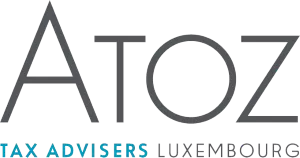OUR INSIGHTS AT A GLANCE
- On 4 March 2020, the Luxembourg tax authorities released a Circular on the CFC rules introduced as of 1 January 2019 following the implementation of ATAD into Luxembourg law
- The Luxembourg CFC rules provide that a Luxembourg corporate taxpayer or a Luxembourg permanent establishment of a non-Luxembourg tax resident entity will be taxed on the non-distributed income of an entity or permanent establishment which qualifies as a CFC provided that the non-distributed income arises from non-genuine arrangements which have been put in place for the essential purpose of obtaining a tax advantage
- The Circular aims at clarifying the scope and the practical application of the new CFCs legislation. Although it brings some useful guidance as to how the rules should be applied in giving some examples, some important questions still remain to be clarified
- In addition, the Circular introduces additional documentation requirements for the taxpayer with respect to its CFCs
- Finally, the Circular emphasises the fact that any restructuring aimed at avoiding the application of the CFCs rules not supported by valid economic reasons will be considered as an abuse of law in the meaning of §6 of the Tax Adaptation Law
On 4 March 2020, the Luxembourg tax authorities released a Circular on the CFC rules (article 164ter of the Income Tax Law) introduced as of 1 January 2019 following the implementation of ATAD into Luxembourg law ("the Circular").
Article 164ter of the Income Tax Law («ITL») provides that a Luxembourg corporate taxpayer (within the meaning of article 159 ITL) or a Luxembourg permanent establishment of a non-Luxembourg tax resident entity (article 160, subparagraph 1 ITL) will be taxed on the non-distributed income of an entity or permanent establishment which qualifies as a CFC provided that the non-distributed income arises from non-genuine arrangements which have been put in place for the essential purpose of obtaining a tax advantage.
No CFC rules existed in Luxembourg prior to the introduction of article 164ter ITL. As any new legislation introduced for the first time and for which no case law exists, the CFC rules raise questions regarding their scope and application. The Circular provides useful guidance and examples with respect to the application of some of the key concepts used by the legislator, such as the concept of control, associated enterprises definition and the computation of the applicable 25% threshold for associated enterprises, the effective taxation test and the meaning of distributed income. The Circular does not however provide sufficient clarification on the very important concept of "non-genuine arrangements". In addition, some practical examples on the computation of the Luxembourg tax on the CFC income for the effective taxation test as well as on the Luxembourg tax treatment of the CFC income included in the Luxembourg taxable basis of the taxpayer would have been useful.
It is important to notice that the Circular introduces additional documentation requirements for taxpayers with respect to their CFCs and emphasises the fact that any restructuring aimed at avoiding the application of the CFCs rules not supported by valid economic reasons will be considered as an abuse of law in the meaning of §6 of the Tax Adaptation Law.
CFC definition
A CFC is an entity or a permanent establishment of which the profits are either not subject to tax or exempt from tax in Luxembourg provided that the two cumulative tests are met: the control test and the effective taxation test.
The Circular specifies that a partnership established in another jurisdiction and considered as a permanent establishment of the Luxembourg corporate taxpayer may also qualify as a CFC if the two tests are met.
-
1st condition: The control test
In the case of an entity, the Luxembourg corporate taxpayer by
itself, or together with its associated enterprises:
a) holds a direct or indirect participation of more than 50% of the
voting rights; or
b) owns directly or indirectly more than 50% of capital (commenting
on «directly OR indirectly», the circular clarifies
that both direct and indirect participations have to be added in
order to determine whether the 50% requirement is met or not);
or
c) is entitled to receive more than 50% of the profits of the
entity.
The Circular specifies that the control requirement covers both the legal control (direct or indirect capital ownership and direct or indirect voting rights) and the economic control (entitlement to profits, i.e. dividends, capital gains on the sale of the shares in the CFC, liquidation proceed) and that the control condition can be met at any time in the course of the concerned tax year (thus, the situation is not analysed at a specific point in time, like at tax year-end).
It further specifies that in case the CFC owns some of its own shares, this portion of the participation has to be excluded when determining whether the control test is met or not. The same applies to shares of the CFC held by a subsidiary of the CFC (an illustrative example is provided in this respect).
Several taxpayers may meet the control test at the same time if one of the taxpayers holds more than 50% of the voting rights and another one holds a participation in the capital of more than 50% (without voting right but with an entitlement to more than 50% of the profits). In such case, both taxpayers will be considered as controlling the CFC.
The control test has to be analysed based on the substance over form approach in line with §11 of the Tax Adaptation Law.
Control within the meaning of article 164ter ITL is the direct and indirect control. It is specified that holding of a participation through a partnership is to be considered as a direct participation in proportion of the participation held in the partnership. Here, in order to compute the direct holding percentage, only the participation in the net assets of the partnership is to be considered, irrespective of the economic rights embedded into the partnership agreement.
Finally, the Circular provides that any restructuring aimed at reducing the level of control of the Luxembourg taxpayer over the CFC so as to be out of the scope of the CFC rules without any valid commercial reasons which reflect economic reality will be qualified as an abuse of law to the extent that the conditions of §6 of the Tax Adaptation Law are met.
-
2nd condition: The effective taxation test
In addition to the control requirement, article 164ter ITL
requires that the following additional condition is met: the actual
corporate tax paid by the entity or permanent establishment is
lower than the difference between:
(a) the corporate tax that would have been charged in Luxembourg;
and
(b) the actual corporate tax paid on its profits by the entity or
permanent establishment.
It means that the actual tax paid is less than 50% of the tax that would have been due in Luxembourg. The Circular clarifies that the contribution to the unemployment fund is not taken into account. Given the currently applicable corporate income tax rate of 17%, the CFC rule will only apply if the taxation of the profits at the level of the CFC is lower than 8.5% applied on the taxable basis determined under the Luxembourg tax rules.
When assessing the actual tax paid by the CFC, only taxes that are comparable to the Luxembourg corporate income tax are to be considered. If the amount of foreign tax is not in EUR, it has to be converted into EUR using the exchange rate as of the end of the tax year.
It is only the tax effectively paid that is to be taken into account. If the CFC receives a reimbursement of the tax paid or if the assessed tax is not recovered by the local tax authorities, the actual tax of the CFC is to be reduced accordingly.
To view the full article, please click here.
Originally published April 2020
The content of this article is intended to provide a general guide to the subject matter. Specialist advice should be sought about your specific circumstances.


